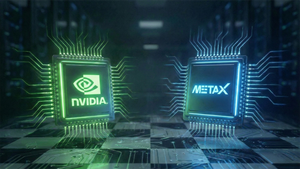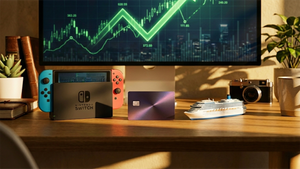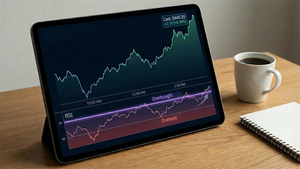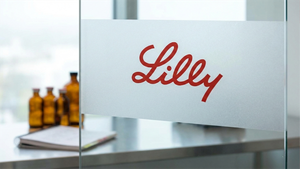
The financial markets are currently witnessing a perplexing and unprecedented phenomenon: the simultaneous, robust rally of both gold, a traditional safe-haven asset, and Artificial Intelligence (AI) stocks, representing high-growth, speculative investments. This dual surge, highlighted by recent market analyses, sends inherently contradictory signals to the broader market, suggesting a deep bifurcation in investor sentiment. While gold's historic ascent, driven by geopolitical tensions, inflation fears, and central bank buying, reflects underlying anxiety and a flight to safety, the soaring valuations of AI companies underscore an aggressive pursuit of transformative growth and technological innovation.
This parallel momentum points to a market grappling with an unusual blend of fear and greed. Investors are simultaneously hedging against significant global uncertainties and economic instability by piling into gold, while also chasing the exponential growth potential offered by the AI revolution. The immediate implication is a market environment characterized by heightened volatility and a challenge to conventional wisdom, where traditional macroeconomic signals appear to be interpreted through a fractured lens.
Detailed Coverage: Unpacking the Dual Market Phenomenon
Leading up to October 14, 2025, the global financial landscape has been shaped by the striking parallel rallies in gold and AI-related stocks, a dynamic explicitly noted by a recent Seeking Alpha article. Gold, the perennial safe-haven, has experienced an unprecedented surge, breaking multiple historical records. In late 2023, prices surpassed $2,000 per ounce, reaching $2,135 by December. This momentum continued into 2024, with forecasts from JPMorgan Chase & Co. placing averages at $2,175 per ounce in Q4 2024. The ascent accelerated dramatically in 2025, breaching $2,900 in February, $3,000 by mid-March, and an all-time high of $3,500 in April amidst renewed U.S.-China trade tensions. By Q3 2025, gold surpassed the $4,000 per ounce threshold, closing September at $3,858.96. On October 14, 2025, spot gold hit a record $4,179.38 per ounce, fueled by escalating safe-haven demand, representing a climb of over 54% in 2025 alone.
This historic gold rally has been propelled by a confluence of factors, primarily global economic uncertainty and persistent geopolitical tensions, which accounted for nearly half of its rise by early 2025. Ongoing conflicts in Eastern Europe and the Middle East, coupled with domestic political instability like a U.S. government shutdown, have intensified the flight to safety. Central banks, particularly from emerging economies, have been aggressive buyers, adding over 1,500 tonnes to their reserves between 2023 and 2025 in a strategic diversification away from the U.S. dollar. Lingering inflation fears and expectations of Federal Reserve interest rate cuts have further boosted gold's appeal, while increased industrial demand, including for AI applications, provides additional support. Investor sentiment, including significant inflows into gold-backed Exchange Traded Funds (ETFs) like SPDR Gold Shares (NYSEARCA: GLD), reflects a broad embrace of gold as crisis insurance.
Concurrently, the AI stock market rally has been equally dramatic, driven by rapid technological advancements and massive corporate investments. The launch of OpenAI's ChatGPT in November 2022 ignited an "AI frenzy." In 2023, the Morningstar Global Next Generation Artificial Intelligence Index gained roughly 68%, with Nvidia (NASDAQ: NVDA) emerging as the "poster child," surging over 200%. The first half of 2024 saw Nvidia gain nearly 150%, pushing its market capitalization to $3.32 trillion by June 18, 2024. By Q1 2025, Taiwan Semiconductor Manufacturing Company (NYSE: TSM) reported a 42% year-over-year revenue increase, with Nvidia's annual revenue for fiscal year 2025 reaching $130 billion, primarily from AI data center chips. Major tech players like Microsoft (NASDAQ: MSFT) and Alphabet (NASDAQ: GOOGL) have announced multi-billion dollar AI infrastructure investments. As of October 14, 2025, Nvidia's stock closed at $188.32, having hit an all-time high of $192.57 just days prior.
The AI rally is primarily fueled by continuous technological innovation in generative AI and cloud-delivered AI, alongside aggressive enterprise adoption across various industries. Dominant semiconductor companies like Nvidia and Taiwan Semiconductor Manufacturing Company (NYSE: TSM) are crucial, providing the essential hardware. Hyperscalers and tech giants, including the "Magnificent Seven," are heavily investing in AI infrastructure and integrating AI into their core services. While investor enthusiasm is high, concerns about potential "AI bubbles" and overvaluation persist, though proponents argue the gains are underpinned by strong fundamentals and dramatic profit expansion. The market has shown selectivity, rewarding firms demonstrating tangible AI-driven results and those providing "picks and shovels" for AI infrastructure, such as power generators and network equipment providers.
Market Movers: Winners and Losers in a Contradictory Climate
The parallel rallies in gold and AI stocks create a complex and often contradictory market environment, delineating clear winners and potential losers. Companies that can strategically leverage both trends, particularly by integrating AI into resource extraction, stand to gain significantly. Gold mining companies like Newmont Corporation (NYSE: NEM) and Barrick Gold (NYSE: GOLD) are direct beneficiaries of soaring gold prices, which translate to increased revenue and profitability. Simultaneously, their investments in AI for predictive maintenance, autonomous equipment, and optimized exploration enhance operational efficiency and cost-effectiveness, further boosting margins during a gold rally. Kinross Gold Corporation (TSX: K; NYSE: KGC) and diversified miner Rio Tinto (NYSE: RIO), which uses AI for mine planning and predictive maintenance, also benefit from this dual tailwind.
On the AI front, companies at the forefront of the artificial intelligence revolution continue their meteoric rise. Nvidia (NASDAQ: NVDA), with its dominant position in AI chips, remains a prime winner, seeing its valuations soar due to intense demand for its GPUs. Advanced Micro Devices (NASDAQ: AMD) is strengthening its AI chip portfolio through strategic partnerships, making it a key player. Broadcom (NASDAQ: AVGO) benefits from surging demand for custom AI chips and infrastructure, while Oracle (NYSE: ORCL) has surged due to its role in powering AI infrastructure, including a significant deal with OpenAI. Companies like Palantir Technologies (NYSE: PLTR), Dell Technologies (NYSE: DELL), Bloom Energy (NYSE: BE), Arista Networks (NYSE: ANET), Corning (NYSE: GLW), and Teradyne (NASDAQ: TER) are also experiencing significant gains by providing essential software, hardware, energy, and testing solutions for the expanding AI ecosystem. These companies thrive on innovation and growth, with strong underlying demand for AI technology potentially decoupling their performance from broader economic concerns, even as gold signals caution.
Conversely, companies that fail to adapt to these dual market forces face significant headwinds. Traditional manufacturing sectors, particularly those without substantial AI integration, may struggle with rising operational costs (exacerbated by inflation signaled by gold rallies) and increased competition from AI-enabled rivals. Consumer discretionary companies could see reduced demand if gold rallies signal a broader economic slowdown or uncertainty. Electronics manufacturers heavily reliant on gold as an input, without innovative cost-management strategies, will face increased production costs. Intel (NASDAQ: INTC) faces competitive challenges in the AI chip market, with skepticism about its AI strategy leading to downgrades. Software giants like Salesforce (NYSE: CRM), ServiceNow (NYSE: NOW), and Adobe (NASDAQ: ADBE) face fears that generative AI could disrupt their core businesses or intensify competition, potentially impacting their revenue models. Additionally, companies with high international supply chain exposure, particularly to U.S.-China trade tensions, could suffer from increased costs and trade restrictions, as geopolitical instability often drives gold's safe-haven appeal.
Broader Implications: A Shifting Financial Landscape
The parallel rally of gold and AI stocks signifies a profound shift in the broader financial landscape, reflecting a "bifurcated market sentiment" driven by both "fear and FOMO" (Fear Of Missing Out). Gold's ascent, now above $4,000 per ounce, is a stark warning that "not all is well" in the global economy, signaling deep-seated anxieties about persistent inflation, a weakening U.S. dollar, and escalating geopolitical risks. The aggressive accumulation of gold by central banks, diversifying away from dollar-denominated assets, underscores a quiet revolution in how nations store value and hedge risk. Meanwhile, the robust performance of AI stocks, contributing to over 30 S&P 500 record highs in 2025, reflects an undeniable optimism about unprecedented technological growth and efficiency gains. This dual phenomenon highlights a market simultaneously embracing speculative growth and hedging against potential downturns.
Broader industry trends reveal a structural shift in both markets. The gold market is moving beyond cyclical upturns, driven by persistent global uncertainties, central bank diversification, and surprisingly, increasing industrial demand from the AI sector itself, which utilizes gold's superior conductivity in advanced processors. The AI sector, on the other hand, is experiencing exponential growth, with the global AI market projected to reach $1.81 trillion by 2030. Massive venture capital and corporate investments, exceeding $250 billion in capital expenditures for 2025 alone, are fueling this expansion, promising significant productivity gains across industries. However, concerns about potential overvaluation and an "AI bubble" persist, with warnings from institutions like the Bank of England about "stretched valuations" and the risk of a sharp correction.
The ripple effects on competitors and partners are substantial. For gold, record prices translate into higher revenues and profit margins for gold mining companies, stimulating investment in exploration and benefiting related industries like mining equipment suppliers. For AI, tech giants heavily invested in the ecosystem, such as Nvidia (NASDAQ: NVDA) and Microsoft (NASDAQ: MSFT), are at the epicenter of the boom. However, many AI startups may struggle to compete with these giants, and a potential market correction could filter out unsustainable ventures. The demand for sophisticated AI hardware components, including gold, will continue to drive supply chain activity, while cloud infrastructure providers dramatically increase capital expenditures for new data centers. Overall, increased volatility is expected, requiring companies to demonstrate actual AI adoption and tangible returns on investment.
Regulatory and policy implications are rapidly evolving. Governments worldwide are stepping up efforts to regulate AI, with new legislation emerging in the U.S., EU, and UK, particularly concerning ethical challenges and copyright. A financial downturn tied to AI could accelerate these efforts. Monetary policy decisions, especially interest rate changes, significantly impact gold prices, while central banks also monitor AI's effects on productivity and inflation. Fiscal policies, including government spending on AI infrastructure, could contribute to inflationary pressures. Geopolitical and trade policies, which fuel gold's safe-haven demand, also pose risks to AI supply chains. Historically, the current market environment draws comparisons to the dot-com bubble due to speculative AI valuations, though proponents argue AI is backed by stronger fundamentals. The "everything rally" of concurrent appreciation across asset classes, and the 1970s economic environment with high inflation and government debt, also serve as precedents for gold's current performance.
The Road Ahead: Navigating Future Market Dynamics
The parallel rallies in gold and AI stocks present a complex and dynamic outlook for the market, demanding adaptable strategies from investors and companies alike. In the short term (remainder of 2025 to early 2026), continued volatility is highly probable. Gold prices, while expected to remain elevated, may experience corrections or consolidation due to "overbought" signals, with potential 10-15% pullbacks before resuming their rally. Geopolitical de-escalation or shifts in monetary policy could also temper its appeal. For AI stocks, concerns about overvaluation and a potential "AI bubble" are growing. A "sudden correction" is possible if AI expectations moderate, or if the anticipated earnings from AI investments fail to materialize, leading to a re-evaluation of current lofty valuations.
Looking at the long term, the outlook for both asset classes remains largely positive, albeit driven by different forces. Gold's rally to over $4,000 per ounce suggests the market is in the "early innings" of a broader accumulation phase, with forecasts suggesting prices could reach $4,900 to $5,000 per ounce by 2026. This will be supported by ongoing central bank buying, limited new supply, and persistent geopolitical uncertainties, potentially signaling a sustained bull run and significant implications for the international monetary system, including de-dollarization trends. The AI revolution, on the other hand, is expected to continue its "gigantic growth cycle," disrupting every sector of life. However, long-term returns will hinge on the ability of AI companies to translate investments into real, sustainable earnings and how technology and global dynamics evolve. A sustained period of "stagflation" (high gold prices with sluggish economic growth) is a potential long-term macroeconomic scenario.
For investors, the bifurcated market necessitates strategic pivots and adaptations. A "AI-Gold Balance" strategy, involving diversified portfolios with both AI-driven growth stocks and gold for inflation protection and stability, is crucial. Increasing gold allocations, potentially up to 20%, as a hedge against stagflation, recession, currency debasement, and policy risks is advisable. Vigilance in monitoring real interest rates, corporate credit conditions, inflation trends, and central bank policies is paramount. Prudent risk management, including profit-taking on recent winners and careful position sizing, is essential given expected volatility. Investors should prioritize AI companies with proven revenue streams over speculative promises and re-evaluate traditional strategies, as passive index investing might miss micro-trends.
Companies must also adapt to this evolving landscape. Gold mining companies are direct beneficiaries of higher prices, poised for significant gains and expanded profit margins, spurring investment in exploration. Companies reliant on gold as a raw material will face increased costs, necessitating adaptations in pricing and sourcing. AI-centric companies, while experiencing soaring valuations, face the highest risk if "bubble" warnings prove accurate, making it critical to deliver tangible returns from AI investments. Global supply chain diversification and localization efforts will be vital for companies exposed to trade tensions. Overall, agility, resilience, and a focus on shock absorption will be paramount for businesses navigating ongoing economic volatility and trade frictions.
Final Assessment: A Market at a Crossroads
The parallel rally of gold and AI stocks in 2025 represents a rare and complex market phenomenon, highlighting a deeply bifurcated investor sentiment. The key takeaway is a market driven simultaneously by the "Fear Of Missing Out" on transformative technological growth and profound "Fear" concerning global economic stability, persistent inflation, and geopolitical uncertainties. Gold's historic ascent past $4,000 per ounce, its best performance since 1979, underscores a flight to safety and a growing unease about traditional financial systems and the U.S. dollar's long-term dominance. Concurrently, the AI boom, propelling leading tech stocks to record highs, signifies a strong belief in its power to generate trillions in economic value and reshape industries, even amidst warnings of potential overvaluation.
Moving forward, the market is poised for continued volatility and dynamic shifts. While the long-term outlook for AI remains optimistic due to its transformative potential, investors must be wary of "AI bubble" risks and the possibility of a sharp correction if actual returns fail to meet lofty expectations. For gold, the bullish sentiment is expected to persist into 2026, with forecasts reaching $5,000 per ounce, sustained by central bank demand and ongoing global instability. This suggests a new investment reality where resilience through diversification is paramount, blending high-growth opportunities with robust hedging strategies.
The lasting impact of this period will likely be a reinforced emphasis on portfolio diversification and a re-evaluation of traditional market correlations. The gold rally signals a diminished trust in conventional systems and a collective search for wealth preservation, potentially marking a gradual evolution away from a dollar-centric global financial model. The AI boom, meanwhile, will accelerate the digital transformation across all sectors, creating new winners and losers based on technological adoption and innovation.
Investors should watch for several key indicators in the coming months. Closely monitor central bank communications regarding interest rates, as policy shifts can significantly impact both asset classes. Keep a vigilant eye on geopolitical developments and trade relations, which can quickly shift market sentiment and drive safe-haven demand. For AI stocks, focus on companies demonstrating tangible earnings and sustainable business models, rather than purely speculative plays. For gold, track central bank buying trends and global inflation data. By understanding the unique drivers behind this paradoxical rally and adopting a disciplined, diversified investment approach, investors can better position their portfolios for resilience and potential growth in an undeniably evolving market.
This content is intended for informational purposes only and is not financial advice






